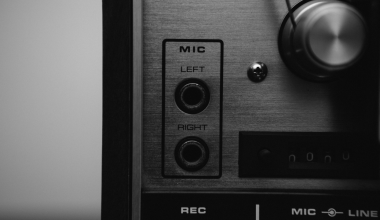Audio mix is the process of blending multiple audio tracks into a cohesive and polished sound. It’s a crucial step in music production, podcast editing, and video creation. Whether you’re mixing vocals, instruments, or effects, an excellent audio mix brings balance, clarity, and emotion to your sound.
For anyone working in music or audio production, mastering the audio mix is essential. It’s the difference between a professional-sounding track and one that falls flat. In this blog, we’ll dive deep into the world of audio mixing, from its basics to advanced techniques.
Why Audio Mix Matters
The audio mix is more than just adjusting levels. It’s about creating a soundscape that resonates with listeners. Here’s why it’s so important:
- Enhances Clarity: A good mix ensures every element is heard distinctly.
- Evokes Emotion: The right balance can amplify the emotional impact of a track.
- Professional Quality: A polished audio mix sets your work apart from amateur productions.
- Prepares for Mastering: Mixing is the foundation for the final mastering process.
Understanding the role of an audio mix helps you appreciate its significance in any audio project.
The Basics of Audio Mix
Before diving into advanced techniques, it’s essential to grasp the basics of audio mix. These fundamental steps lay the groundwork for a professional mix:
- Balancing Levels: Adjust the volume of each track to create a harmonious blend.
- Panning: Distribute sounds across the stereo field for a wider, more dynamic mix.
- EQ (Equalization): Shape the frequency balance to avoid clashing sounds.
- Compression: Control dynamics to ensure consistent loudness.
- Reverb and Delay: Add depth and space to your mix.
Mastering these basics is the first step to creating a clean and polished audio mix.
Tools for Audio Mix
To achieve a professional audio mix, you need the right tools. Here are the essentials:
- Digital Audio Workstation (DAW): Software like Pro Tools, Logic Pro, or Ableton Live is crucial for mixing.
- Audio Interface: A good interface ensures high-quality input and output for your audio.
- Studio Monitors and Headphones: Accurate monitoring helps you hear every detail of your mix.
- Plug-ins: EQs, compressors, and reverbs are essential tools for shaping your sound.
- Reference Tracks: Use professionally mixed songs as a benchmark for your audio mix.
Having the right tools makes the process of audio mixing more efficient and enjoyable.
Advanced Techniques in Audio Mix
Once you’ve mastered the basics, it’s time to explore advanced techniques. These can take your audio mix to the next level:
- Parallel Compression: Add punch and sustain to tracks without losing dynamics.
- Sidechain Compression: Create rhythmic effects by ducking certain frequencies.
- Automation: Add movement and emotion by automating volume, panning, and effects.
- Multiband Compression: Control specific frequency ranges for a more precise mix.
- Mid/Side Processing: Adjust the center and sides of the stereo image for a more immersive sound.
Using these techniques allows for a more creative and professional audio mix.
Common Challenges in Audio Mix
Mixing audio can be challenging, especially for beginners. Here are some common issues and how to address them:
- Overcrowded Mix: Too many elements can make a mix feel cluttered. Solution: Use EQ to carve out space for each sound.
- Harsh Frequencies: High frequencies can cause listener fatigue. Solution: Use a de-esser or EQ to tame harshness.
- Lack of Depth: A flat mix lacks excitement. Solution: Add reverb and panning to create space.
- Poor Vocal Balance: Vocals are often buried or too loud. Solution: Use automation and compression for consistent levels.
Being aware of these challenges can help you create a smoother and more balanced audio mix.
The Role of Audio Mix in Different Industries
The audio mix is not limited to music. It plays a vital role in various industries:
- Film and TV: A balanced mix enhances dialogue, sound effects, and music.
- Podcasts: Clear audio ensures an enjoyable listening experience.
- Gaming: An immersive audio mix enhances the gaming experience.
- Live Events: Real-time mixing ensures balanced sound for audiences.
No matter the medium, a well-executed audio mix is critical for engaging content.
Tips for Creating a Great Audio Mix
Here are some practical tips to improve your audio mix:
- Start with a Vision: Know what you want your mix to sound like before you begin.
- Use Reference Tracks: Compare your mix to professional tracks in the same genre.
- Mix at Low Volumes: Prevent ear fatigue and ensure balance at all levels.
- Take Breaks: Step away from your mix to maintain objectivity.
- Trust Your Ears: While tools help, your ears are the ultimate judge.
Consistently applying these tips will improve the quality of your audio mixes over time.
The Future of Audio Mix
As technology evolves, the art of audio mixing continues to change. AI-powered tools, immersive audio formats, and cloud-based collaboration are shaping the future of mixing. Staying updated with these trends ensures your skills remain relevant.
Conclusion:
Audio mix is both an art and a science. It requires technical knowledge, creativity, and patience. Whether you’re mixing music, podcasts, or films, a well-executed audio mix can make your work stand out.
Related Articles:
For further reading, explore these related articles:
- How to Send Recorded Audio on Instagram | Easy Steps Explained
- High-Quality Audio Songs | Elevate Your Listening Experience
For additional resources on music marketing and distribution, visit Deliver My Tune.






